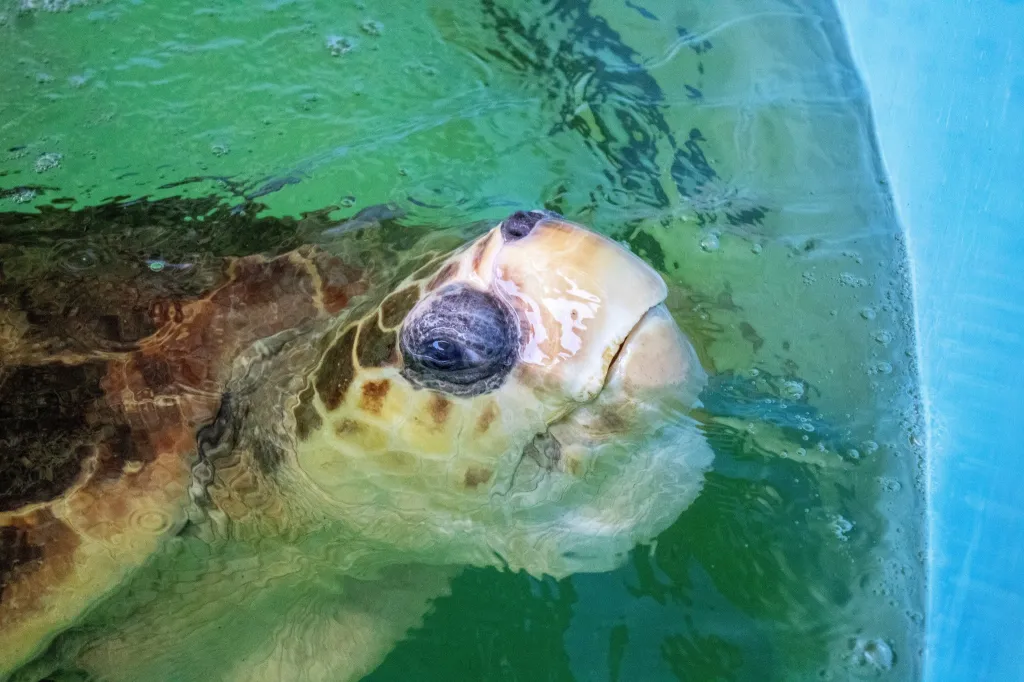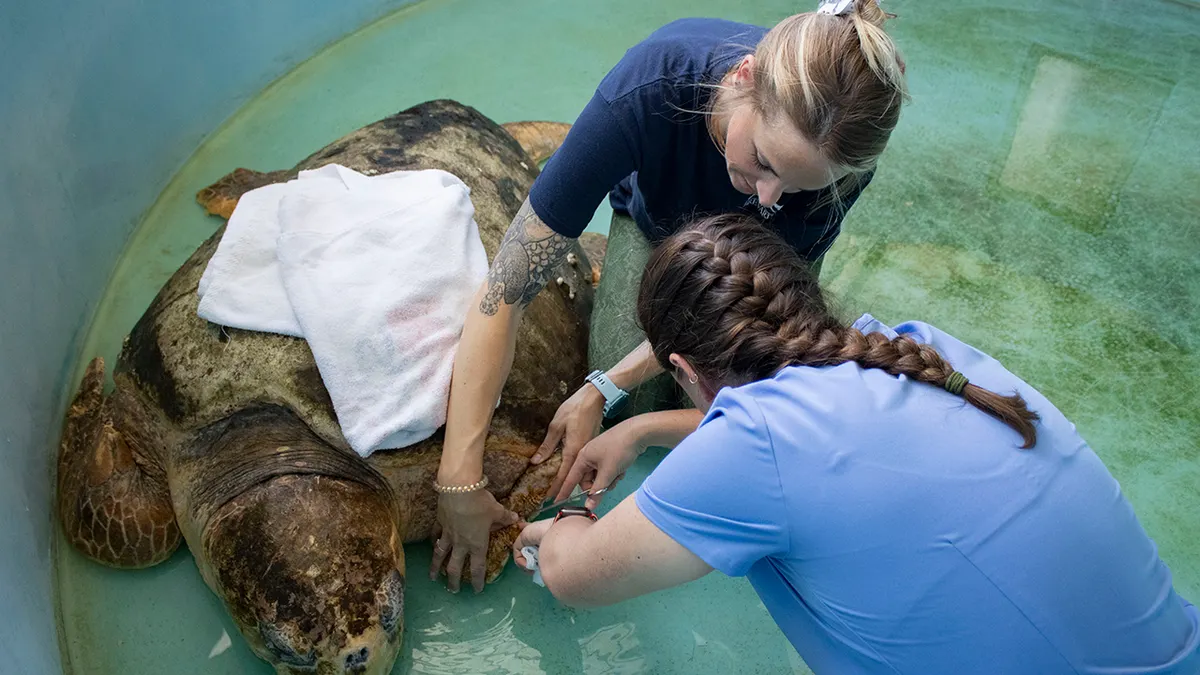A 375-pound (170 kg) female sea turtle was released into the Atlantic Ocean after three months of recovery in Florida. Brevard Zookeepers released a male bighorn antelope named Bubba Wednesday afternoon in Cocoa Beach.
Rehabilitation and rescue: Bubba, a sea turtle with serious injuries, returned to the Atlantic Ocean
A preliminary examination found that the sea turtle named Bubba, discovered by biologists with Inwater Research in St. Lucie County on April 10, had serious injuries from a predator. These wounds were obvious on initial examination and indicated that the animal had been attacked in the recent past. In addition, Bubba was found to have an intense infestation of sea leeches, which caused the development of anemia.
Inwater Research staff took immediate action to save the sea turtle, using a crane to lift it from the water and place it in a special container for transport to the zoo. At the Brevard Zoo, specialists conducted rehabilitation procedures aimed at restoring Bubba's health and strength. After three months of intensive care and treatment, the 375-pound (170 kg) sea turtle was successfully returned to its natural environment - the Atlantic Ocean.

Biologists estimated Bubba's age to be 60–75 years old, highlighting her longevity and endurance in an environment where she faces numerous threats, including predators and disease. Bubba's return to the ocean was an important step not only for her individual survival, but also for the conservation of biodiversity in marine ecosystems.
Amazing inhabitants of the oceans: sea turtles and their unique life
Sea turtles are fascinating creatures that live in various oceans around the world. They lead a unique lifestyle, full of amazing adaptations to the marine environment. These animals are known for their longevity and ability to travel great distances, making them important participants in marine ecosystems.
Sea turtles spend most of their lives in the water, coming onto land only to lay eggs. They can swim at depths of up to several hundred meters and stay in the water for several hours without rising to the surface. These turtles are known for their long lives, often reaching ages of 80-100 years or even more.

The diet of sea turtles varies depending on their species. Some species prefer shellfish and sea urchins, others prefer seaweed and soft corals. Jellyfish and other marine invertebrates are also an important part of their diet.
One of the most famous characteristics of sea turtles is their ability to return to their birthplace to lay eggs. This phenomenon is called nesting and is a long-term process that can repeat itself after several years.
Sea turtles also play important roles in ecosystems, participating in food chain cycles and maintaining the balance of marine communities. However, they face numerous threats, including fishing and habitat loss due to human activity. It is important to take action to conserve these unique animals to ensure their survival and preserve the biodiversity of the world's oceans.
In general, the life of sea turtles is a complex symbiotic environment where these animals have adapted to life in the aquatic element and play a significant role in marine ecosystems.

